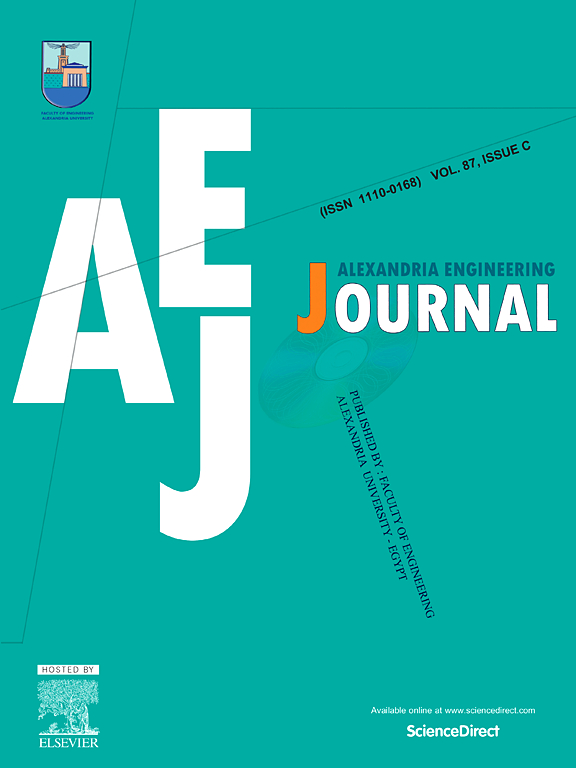利用混合深度学习模型对区块链辅助的物联网环境入侵检测进行 Sandpiper 优化
IF 6.2
2区 工程技术
Q1 ENGINEERING, MULTIDISCIPLINARY
引用次数: 0
摘要
物联网(IoT)中的入侵检测是物联网安全的重要组成部分。物联网设备面临着各种各样的攻击,而入侵检测系统(IDS)在检测和应对这些威胁方面发挥着重要作用。典型的 IDS 解决方案可用于监控物联网网络的流量、设备行为和系统日志,以发现入侵或异常移动的迹象。深度学习(DL)方法有望提高物联网设备 IDS 的准确性和有效性。区块链(BC)辅助物联网平台的入侵检测有很多好处,包括更好的数据完整性、透明度和抗篡改性。本文从区块链辅助物联网平台出发,提出了一种新型鹬类优化器,该优化器具有基于混合深度学习的入侵检测功能(SPOHDL-ID)。SPOHDL-ID 模型的主要贡献在于通过物联网平台的入侵检测和分类过程实现安全性。在这种情况下,BC 技术可用于安全的数据共享过程。在所介绍的 SPOHDL-ID 技术中,使用 SPO 模型从网络流量数据中选择特征。此外,SPOHDL-ID 技术还采用了用于入侵检测的 HDL 模型,其中包括设计一个具有堆叠自动编码器(CNN-SAE)模型的卷积神经网络。在超参数调整过程中使用了甲虫搜索优化算法(BSOA)方法,以提高 CNN-SAE 技术的识别结果。为展示 SPOHDL-ID 方法的更好解决方案,创建了一个广泛的模拟结果。在 ToN-IoT 和 CICIDS-2017 数据集下,SPOHDL-ID 方法的实验验证结果表明其准确率分别达到 99.59 % 和 99.54 %,优于最新技术。本文章由计算机程序翻译,如有差异,请以英文原文为准。
Sandpiper optimization with hybrid deep learning model for blockchain-assisted intrusion detection in iot environment
Intrusion detection in the Internet of Things (IoTs) is a vital unit of IoT safety. IoT devices face diverse kinds of attacks, and intrusion detection systems (IDSs) play a significant role in detecting and responding to these threats. A typical IDS solution can be utilized from the IoT networks for monitoring traffic, device behaviour, and system logs for signs of intrusion or abnormal movement. Deep learning (DL) approaches are exposed to promise in enhancing the accuracy and effectiveness of IDS for IoT devices. Blockchain (BC) aided intrusion detection from IoT platforms provides many benefits, including better data integrity, transparency, and resistance to tampering. This paper projects a novel sandpiper optimizer with hybrid deep learning-based intrusion detection (SPOHDL-ID) from the BC-assisted IoT platform. The key contribution of the SPOHDL-ID model is to accomplish security via the intrusion detection and classification process from the IoT platform. In this case, the BC technology can be used for a secure data-sharing process. In the presented SPOHDL-ID technique, the selection of features from the network traffic data takes place using the SPO model. Besides, the SPOHDL-ID technique employs the HDL model for intrusion detection, which involves the design of a convolutional neural network with a stacked autoencoder (CNN-SAE) model. The beetle search optimizer algorithm (BSOA) method is used for the hyperparameter tuning procedure to increase the recognition outcomes of the CNN-SAE technique. An extensive simulation outcome is created to exhibit a better solution to the SPOHDL-ID method. The experimental validation of the SPOHDL-ID method portrayed a superior accuracy value of 99.59 % and 99.54 % over recent techniques under the ToN-IoT and CICIDS-2017 datasets.
求助全文
通过发布文献求助,成功后即可免费获取论文全文。
去求助
来源期刊

alexandria engineering journal
Engineering-General Engineering
CiteScore
11.20
自引率
4.40%
发文量
1015
审稿时长
43 days
期刊介绍:
Alexandria Engineering Journal is an international journal devoted to publishing high quality papers in the field of engineering and applied science. Alexandria Engineering Journal is cited in the Engineering Information Services (EIS) and the Chemical Abstracts (CA). The papers published in Alexandria Engineering Journal are grouped into five sections, according to the following classification:
• Mechanical, Production, Marine and Textile Engineering
• Electrical Engineering, Computer Science and Nuclear Engineering
• Civil and Architecture Engineering
• Chemical Engineering and Applied Sciences
• Environmental Engineering
 求助内容:
求助内容: 应助结果提醒方式:
应助结果提醒方式:


